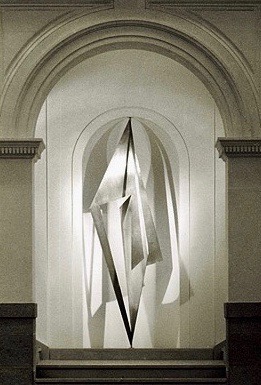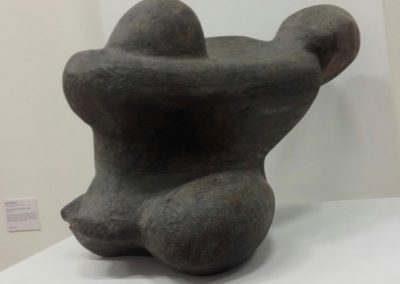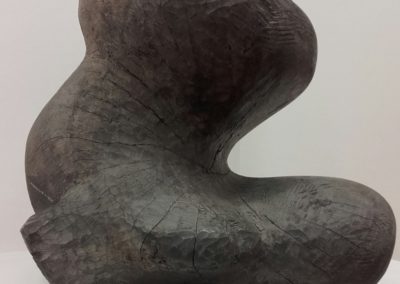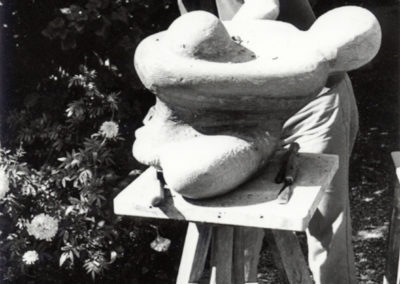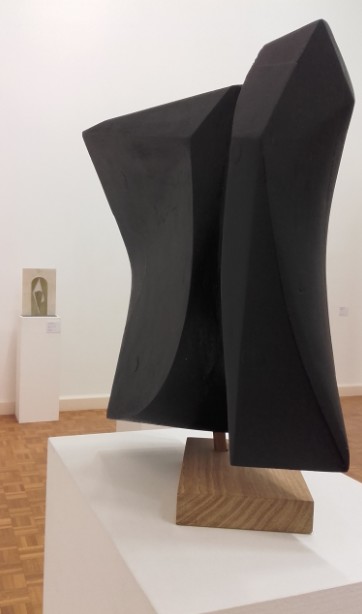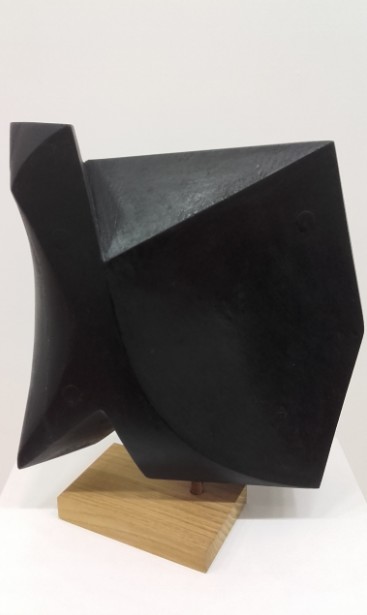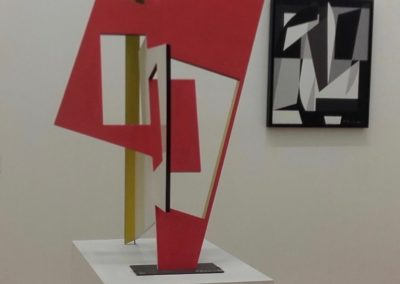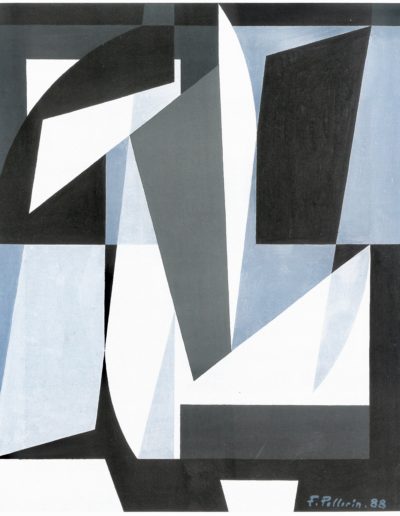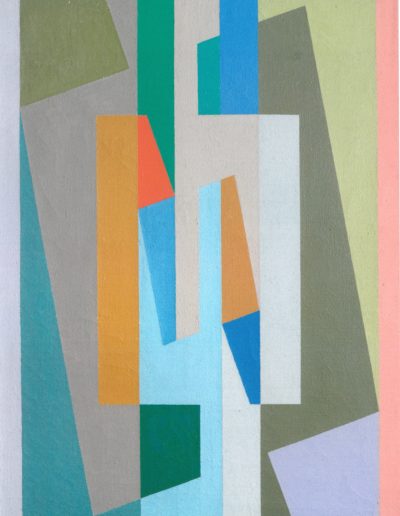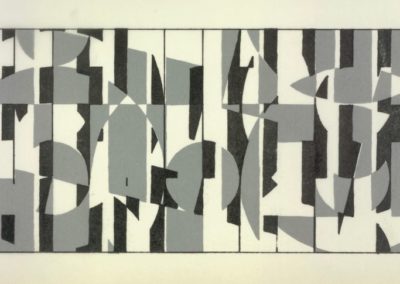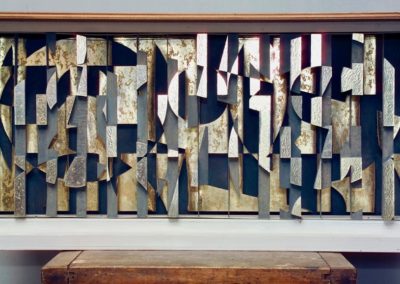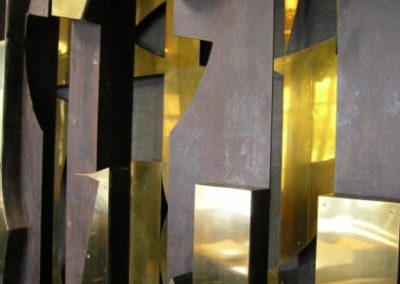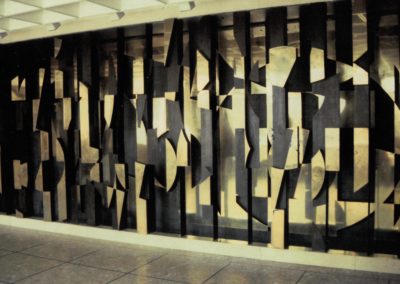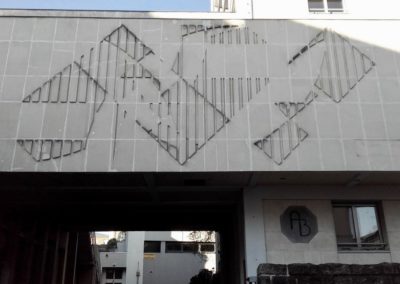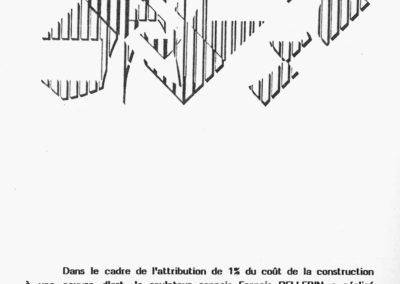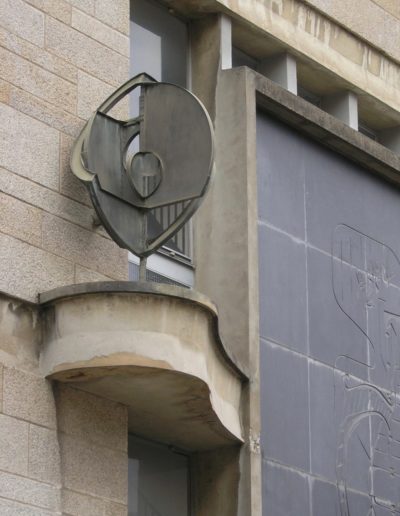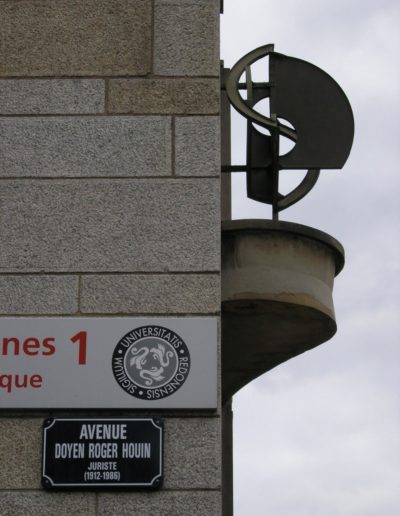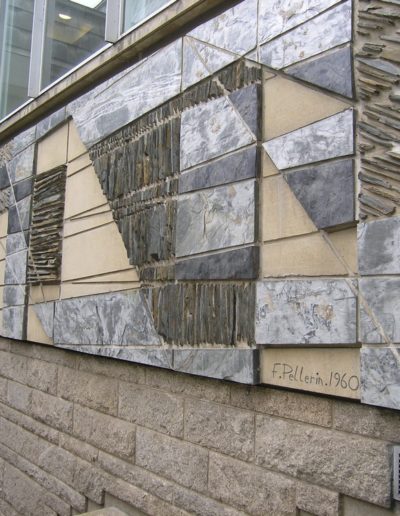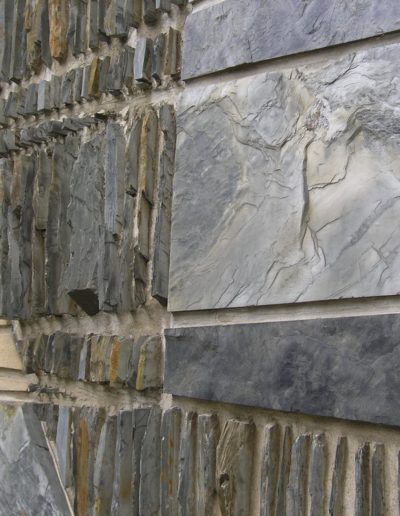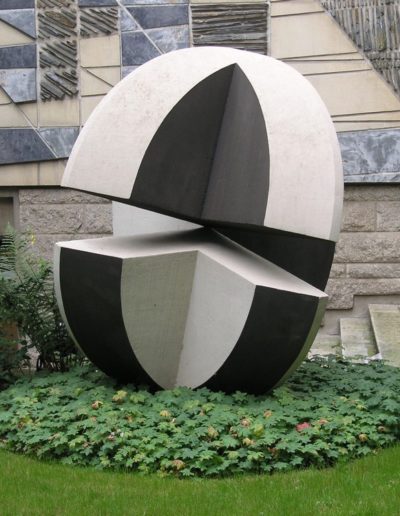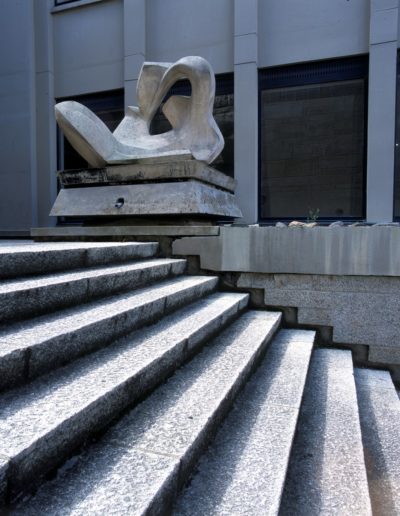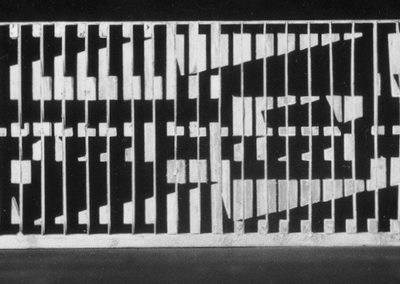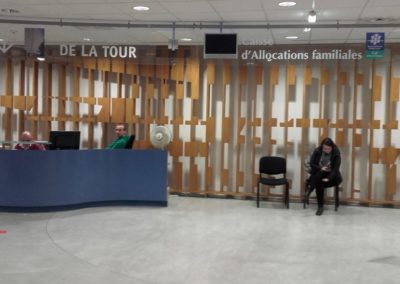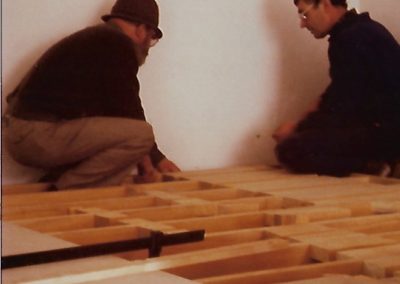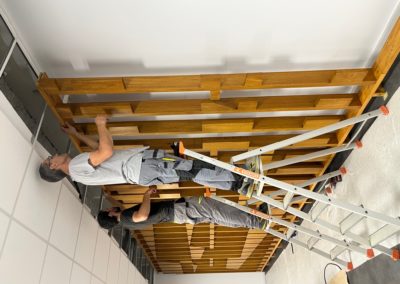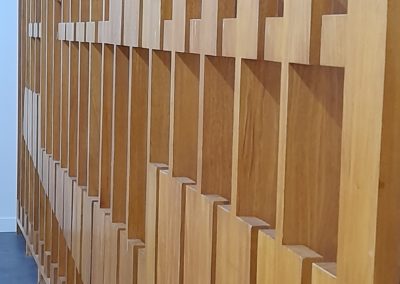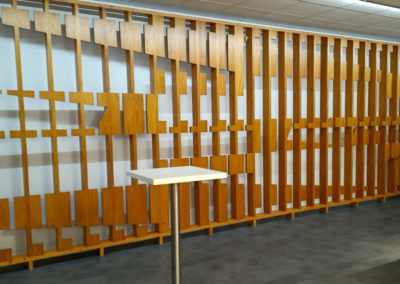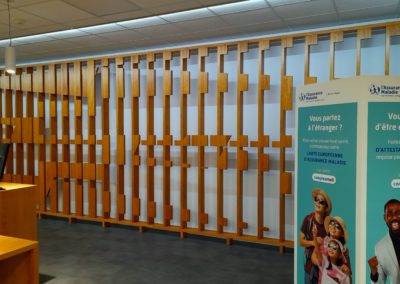Guide to works in Rennes City Centre
Musée des Beaux-Arts, quai Émile Zola
Structure, 1956. A geometric mobile structure in brass, with motor, 338 x 115 cm, displayed in the alcove at the foot of the central stairway, in the museum’s entrance hall (atrium).
Francis Pellerin’s only mobile work was created for the reopening of the museum after the Second World War. It is a work of kinetic art, a genre subsequently developed by the Groupe de Recherche d’Art Visuel (GRAV, research group for visual art).
On the upper floor, before you reach the art construit (Constructed Art) room, you can see La Joie, a sculpture in wood sourced from the gardens of the Villa Medici and completed by Pellerin in 1947 (42 x 60 x 43 cm). Suzanne Pellerin donated the work to the museum. She described it as being representative of the sculptor’s craft and his transition to abstraction during his residency in Rome.
The philosopher Monique Merly expanded on this:
“[…] the light falling on his work, brought out the very form he was seeking better than he himself could. […] the full skill of the artist was called upon, and yet did not suffice. It nourished and served the work […] that was in the process of creating itself. The ‘hoped-for unhoped-for’ work.”
The room dedicated to Constructed Art, the Groupe Mesure and the Salon des Réalités Nouvelles displays three other works donated by Suzanne Pellerin:
- A polychrome structure déployée, 1957, 110 x 60 x 58 cm, is an illustration of the direction Pellerin’s explorations were taking during his period of involvement with the Salon des Réalités Nouvelles and the Groupe Mesure (see pictures on the Musée des Beaux-Arts de Rennes page)
- A sculpture in the round, 1984, stained wood, 32 x 11 x 32 cm. This work exemplifies the intense research he carried out during the 1980s in his rue George Sand atelier in Rennes.
- A pictorial work, 1988, acrylic on canvas, 100 x 81 cm.
This canvas is one of a series of versions of Grand Vaisseau, which dates from the early 1950s. The title pays tribute to the writings of Kazimir Malevich.
A geometric oil on canvas, 1957, 130 x 89 cm. Acquired by the Société des Amis du Musée, there are close parallels between this work and the polychrome structure déployée mentioned above.
Inspection Académique (formerly the Faculté des Sciences), quai Dujardin
Anascope, 1961. A structure in polished copper, steel and black schist, 650 x 250 cm, displayed in the entrance hall. Alternative titles: Hommage à la Science and Infinitude.
The viewer is offered a kinetic perception of this work, an example of Constructed Art, as they move around it. Sadly, its readability has been impaired by the positioning of a reception desk directly in front of it. In an article in Ouest-France, Laurence Imbernon – curator of the 2005 Francis Pellerin retrospective at the Musée des Beaux-Arts de Rennes – expressed her regret at the lack of respect for a significant work of art.
Film footage from 1964, broadcast on FR3, held by the Institut National de l’Audiovisuel (INA, French national audiovisual institute), shows Francis Pellerin in front of this work, in conversation with the interviewer.
Collège Anne de Bretagne (formerly Lycée Martenot), rue Martenot
Arpèges, 1963. A geometric bas-relief in white stone set above the entrance porch of the school which is situated to the left of the Parc du Thabor’s south gate.
Speaking of this work in 2005, Suzanne Pellerin was quoted in Le Rennais:
“For the first time, Francis could apply the idea of an extendable form that could be compressed or opened out on various scales – a concept that would achieve its apotheosis twenty years later with the large granite and schist mural at the Le Triangle cultural centre in the Zup Sud area of Rennes.”
Faculté de Droit, Rennes
Works by Francis Pellerin of differing styles, completed between 1960 and 1962, can be seen at Rennes University’s Law Faculty, which is located between the north gate of the Parc du Thabor and rue Jean Guéhenno:
- Rue Jean Macé: a structure in metal (200 x 70 x 40 cm) attached to the façade and adjacent to an engraved slate plaque by Paul Lemagny. The structure unfolds in three dimensions: a variation on the theme of the boule, the spherical form.
- Faculty building, courtyard area accessible via lobby: a mural in stone and slate measuring about 35 m2. Pellerin explained that “…it was a question of arranging shapes, colours and materials… not about portraying the Bench, in its symbolic red and black…” The varying shades of grey and brown create a rhythm accentuated by the striations achieved by aligning stones on their edges, perpendicular to the vertical surface of the wall rather than flat against it. In front of this mural sits a boule, a sculpture in the round in white stone, 285 cm in diameter. The work represents Good and Evil in a duality of black and white and was initially conceived in enamelled metal. The spherical form of the boule was one that Pellerin returned to again and again in his work.
- Rue Jean Guéhenno: stylised fish in white stone, lecture hall garden water feature and water feature by steps leading to it. The first fish is set horizontally, the second vertically (with tail raised).
To return to the centre of Rennes there is a bus stop nearby, across the road from the university canteen. The Jules Ferry metro station (line B) is due to open early 2022.
Geometric structure, copper and brass, 1960, Faculté de Droit, rue Jean Macé
© Patrick Merret / MBA Rennes
Geometric structure, copper and brass, 1960, Faculté de Droit, rue Jean Macé
© Patrick Merret / MBA Rennes
Detail, mural, stone and slate, 1960, courtyard area, Faculté de Droit
© Patrick Merret / MBA Rennes
Those who are returning to Rennes railway station can visit the CPAM building, located opposite the Les Champs Libres cultural centre (metro Charles de Gaulle) and some 100 metres from the station. In the building’s foyer you can see the mural structure created there in 1984. An openwork panel made of idigbo, a tropical hardwood, it measures 10.44 x 2.90 m. The vertical elements are 15 cm in width and 4 cm in depth. The viewer’s reading of the rhythmic geometric forms changes according to where they are standing.
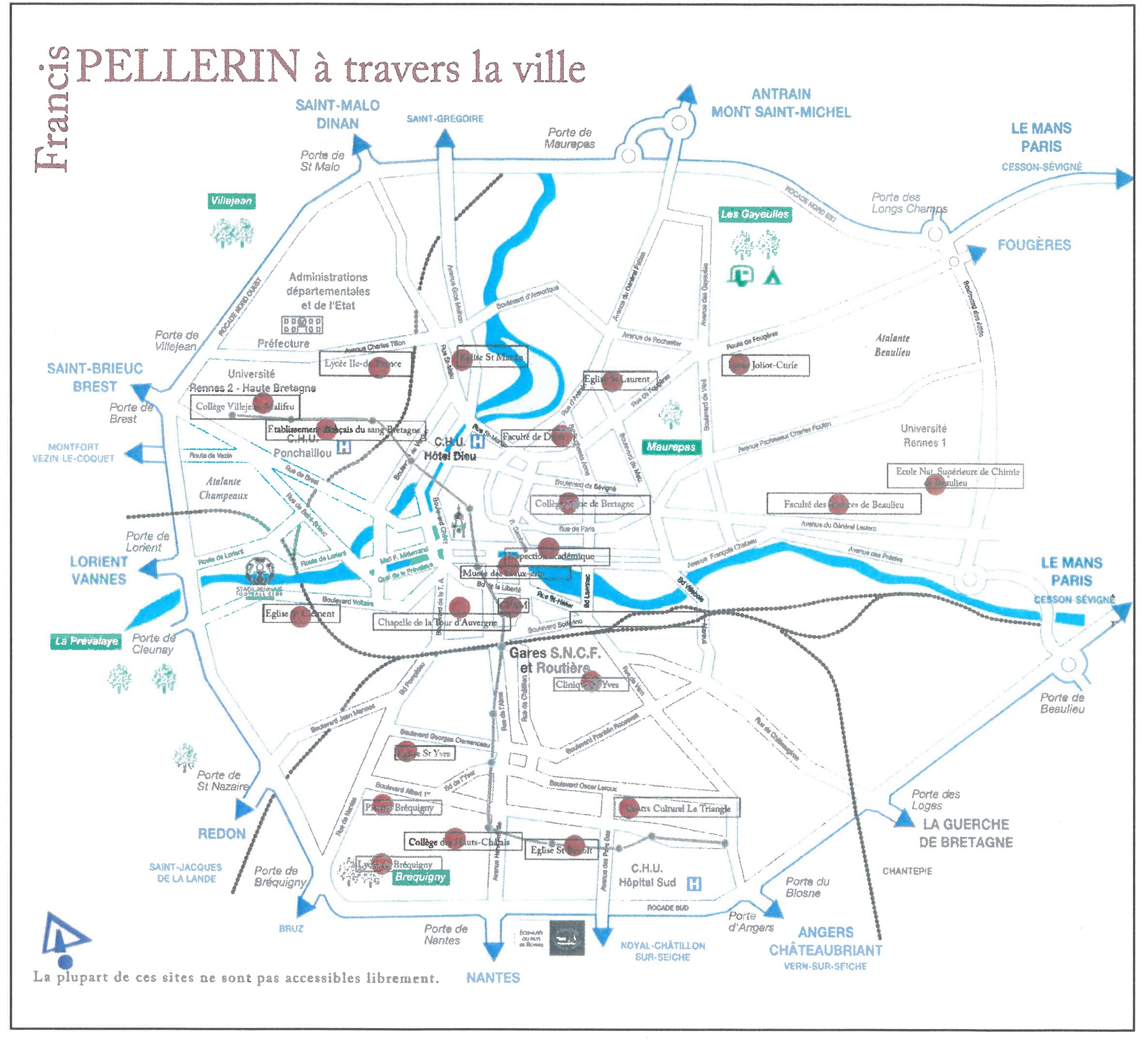
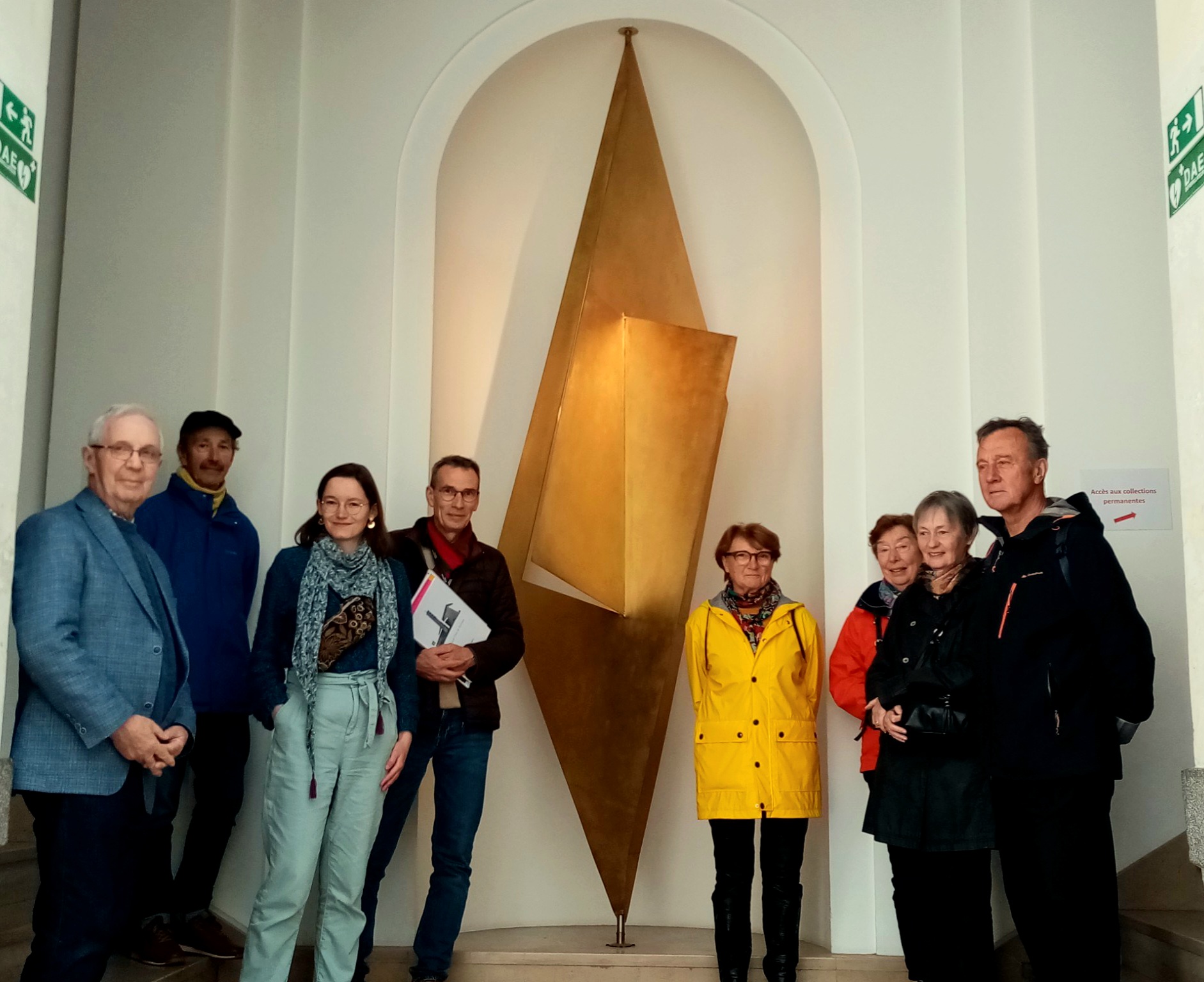
Destination Rennes organises occasional tours of works by Francis Pellerin on public display in the city.
This photograph shows members of the tour group on 23-04-2023. After visiting the Stations of the Cross in the Church of Saint Yves, they went on to view works by the artist at the Musée des Beaux-Arts de Rennes.

